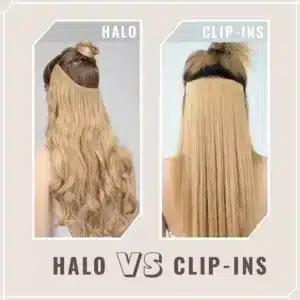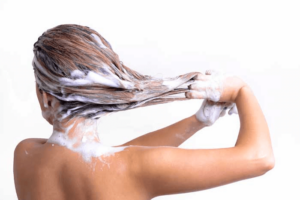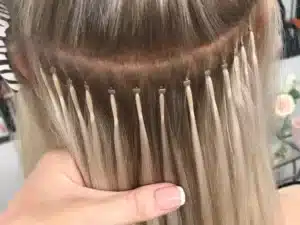Brides need hair that holds, shines, and photographs well. Thin ends, weak volume, or frizz create stress and last-minute fixes. This guide gives stylists clear, repeatable choices for every dress, venue, and timeline.
Bridal extensions succeed when the method matches hair type, style goal, and wear time. This playbook compares clip-ins, tape-ins, halos, wefts, and keratin tips for weddings, then offers a selection matrix, style pairing ideas, and field-tested tips to keep results stable from trial to last dance.
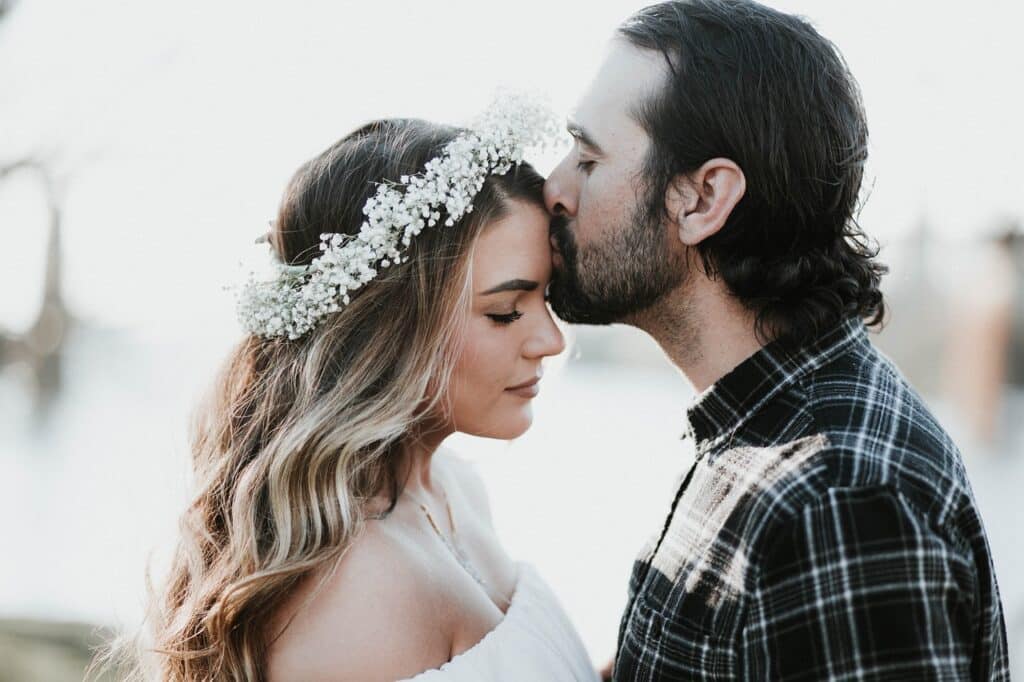
Use the sections below to map the right system, plan install timing, and brief clients on care. The aim is fewer surprises, faster day-of execution, and photos that read clean.
Should I get hair extensions for my wedding?
Brides want full, smooth, camera-ready hair. Natural density may not hold curls or updos all day. Weather, sweat, and time test every style under flash and motion.
Yes—extensions help most brides. Added volume supports curls, buns, and waves. Extra length expands style options. Properly mapped anchors stabilize shape, reduce teasing, and keep shine for long events and multiple looks.
When extensions simplify the wedding workflow
For large waves, clean chignons, or sleek ponies, supplemental hair acts as a structural frame that grips pins and holds curl memory. Extensions reduce reliance on heavy product layers, so finish stays glossy and touchable. They also fill predictable thin zones at the nape and temples that often show under bright light or wide-angle lenses. In humid or windy venues, the added weight controls fall and preserves silhouette. For fine-density hair, lightweight systems—such as selective tapes or a halo—deliver support without visible hardware or scalp fatigue. Extensions also support timeline flexibility: hair can carry through welcome dinner, ceremony, portraits, and reception with controlled touch-ups rather than full resets. Situations to scale down include minimalist gowns with strict sleek looks on a head of already-ideal density and length; here, targeted micro-fills often outperform heavy builds. The stylist’s task is not “more hair,” but the smallest intervention that guarantees stability and polish across the schedule.

| Goal | Recommended Approach | Notes |
|---|---|---|
| Big Hollywood waves | Tape or weft + clip boosters | Even weight, fast touch-ups |
| High bun/chignon | Keratin tips or micro wefts | Low bulk, clean surface |
| Half-up boho | Halo or selective tapes | Light tension, soft movement |
| Sleek pony | Tape or keratin | Flat anchors, hidden edges |
clip in hair extensions for wedding
Timelines are tight, trial slots are short, and removal after the event should be instant. Flexibility matters more than long wear.
Clip-ins serve one-day wear, travel weddings, and bridal parties. They add immediate volume and length, then come out in minutes. Clean sectioning, anchoring, and blending keep clips hidden during movement and flash.

Trial, anchoring, and risk control
Clip-ins allow rapid A/B testing of length and density in the first consultation. Shift pieces to trial multiple parts and silhouettes without chemical or adhesive commitments. On wedding day, anchor clips into micro backcombed pads or slim braid tracks to create stable bite points, especially at temples and under crown sections. Pre-curl off-head, label pieces by zone, and assemble in layers to speed execution. Manage show-through by using narrower wefts at sides, matching root shadows, and following head curvature. For fine hair, select lighter pieces with silicone-lined clips to reduce slip and fatigue. Carry spares and a travel spray for late-day reinforcement. Clips are not ideal for high, tight updos but excel for half-up waves, low buns, and glam lengths that read soft while holding form under motion.
| Pros | Cons | Best For |
|---|---|---|
| Fast, removable, budget-flexible | Can shift if poorly anchored | Elopements, destination events |
| Great for trials and quick changes | Slight bulk at clip points | Half-up styles, waves, low buns |
| No move-ups or remover needed | Requires strong blending | Bridesmaids and last-minute builds |
tape in extensions for wedding
Some weddings require multi-day hair: rehearsal dinner, ceremony, and day-after events. Stability, comfort, and low profile become essential.
Tape-ins provide flat, comfortable panels with strong hold and clean photos. They suit brides who want hair ready across several days. Install 7–10 days before the event so panels settle and minor tweaks happen early.

Mapping, timing, and care between install and ceremony
Schedule consult and color mapping four to six weeks prior. Align extension tones with bridal hair and lighting conditions; add root smudge or lowlights if needed. Install tapes about one week before the wedding; perform a micro check two to three days before for corner trims or density balancing. Keep panels 3–5 mm off the scalp and switch to single-side tabs near parts and temples for invisibility; use sandwich panels in support zones to maximize curl hold and pin grip. Share a rule card: no oils at roots, no conditioner on bonds, dry roots after workouts, brush twice daily, sleep in a loose braid. On event day, set curls at moderate heat and cool fully clipped to maintain gloss and longevity. Tapes pin easily for veils and headpieces, but placement should anticipate comb locations to avoid hardware conflicts.
| Pros | Cons | Best For |
|---|---|---|
| Very flat and comfortable | Requires salon install & removal | Multi-day schedules |
| Excellent curl memory | Avoid oils/heat at bonds | Structured waves, sleek styles |
| Easy veil pinning | Move-up later | Photo-heavy timelines |
halo extensions for wedding
Some clients need volume without adhesive or widespread clips. Comfort and speed outrank maximum versatility.
Halo extensions use a thin, adjusted wire with one wide weft. They add weightless fullness in minutes and remove just as fast. They work best for soft waves and half-up looks with minimal scalp tension.

Fit, finish, and stability under motion
Measure and customize wire length; bend endpoints for comfort. Hide the wire beneath a crown section and secure the cover section with light teasing plus two to four micro pins, which stops lateral shift during dancing or wind. To blend, root-smudge or lowlight the top if the client has dimension. For very fine hair, select a thinner halo base, longer layers, and slightly reduced density to avoid ridge visibility. Halos are strong candidates for destination weddings due to easy packing, fast setup in crowded prep rooms, and zero post-event maintenance. Limitations include high, tight updos and sleek, glassy finishes where a flatter anchor is needed. Pairing a halo with a couple of side clips can widen face-framing without adding tension or complexity.
| Pros | Cons | Best For |
|---|---|---|
| No tension, very fast on/off | Not ideal for high tight updos | Half-up, boho waves |
| Travel-friendly and simple | Wire fit must be precise | Sensitive scalps |
| Budget-flexible | Needs careful top coverage | Outdoor ceremonies |
weft extensions for wedding
When maximum stability and custom density are required—especially on medium to thick hair—row systems shine.
Weft methods (hand-tied, genius, or beaded) distribute weight evenly and create durable foundations that hold curls and pins under heat, wind, and long receptions. They require professional mapping and install time.

When to choose wefts and how to map for weddings
Choose wefts for dramatic length or high-density looks. Hand-tied and genius wefts offer thin profiles with strong stitch lines that pins grip well. For beaded rows, maintain even tension and avoid the crown whorl to prevent peek. Spread weight with two lighter rows instead of one heavy row. Blend with invisible layering and point cutting to keep movement soft while retaining shape. Wefts support sleek ponies, sculpted buns, and glam waves, and they provide robust anchor points for accessories. Maintenance includes brushing from ends upward while supporting roots, avoiding oil near row anchors, and drying roots after sweat or swim during honeymoon days. For brides with very fine hair, consider lighter alternatives or micro rows only in support zones to reduce bulk and tension.
| Pros | Cons | Best For |
|---|---|---|
| Strong anchors, custom build | Longer service and higher cost | Dramatic length/volume |
| Even distribution, great for pins | Requires trained stylist | Sleek pony, high bun |
| Long wear across events | Row tension must be managed | Thick-hair clients |
keratin extensions for wedding
Precision updos and sleek, camera-close looks need micro-placement and a surface without ridges.
Keratin (U-tip) bonds create tiny, flexible anchors that hide easily and move like natural hair. They take longer to install and remove but deliver unmatched placement control for formal designs.
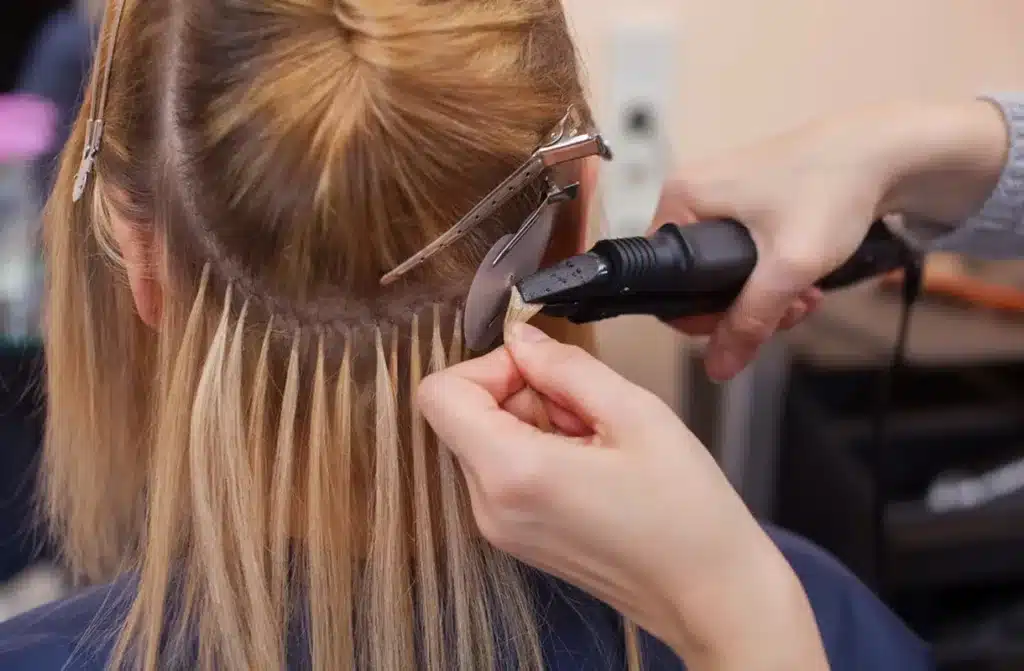
Placement strategy and event timing
Use keratin bonds to place weight exactly where structure is needed: crown for lift, nape for chignons, and temples for symmetry. Micro bundles protect surface smoothness under tight finishes. Install four to six weeks before the wedding to allow small adjustments and to ensure bonds settle. Between install and event, teach brushing with root support, keep irons off bonds, and avoid oils near anchors. Removal after the wedding should be scheduled and performed with proper tools. For brides who want rapid post-event changes, combine a small keratin map with temporary pieces for rehearsal or reception transformations.
| Pros | Cons | Best For |
|---|---|---|
| Ultra-discreet, precise weight | Time-intensive service | Intricate buns, sleek looks |
| Natural movement and feel | Professional removal required | Editorial polish |
| Strong pin support | Higher price point | Long ceremonies, formal venues |
how to choose the right Bridal Hair Extensions for your clients?
Too many methods and promises can slow decisions. A simple matrix keeps planning fast and objective.
Use five inputs: hair type, style goal, wear time, sensitivity, and budget. Match the method to the highest-risk factor first, then tune density, length, and color mapping.
The selection matrix for consults
1) Hair type: Fine hair needs low-bulk edges and gentle tension (halo, selective tapes). Medium to thick hair can support wefts or a robust tape map.
2) Style goal: High bun or sleek pony needs low-profile anchors and a clean surface (keratin, tape). Big waves benefit from even weight and curl memory (wefts, tape). Half-up boho thrives on halos or light tapes.
3) Wear time: One-day events call for clip-ins or halos. Multi-day events prefer tapes or wefts for stability.
4) Sensitivity: For tender scalps, reduce anchor count and consider halos; for durable scalps, use tapes/wefts/keratin based on the look.
5) Budget: Scale density and method while keeping quality high. One step longer than target length allows trimming to full ends.
| Factor | Best Choices | Backup |
|---|---|---|
| Fine hair, half-up | Halo, selective tape | Clip-ins with narrow pieces |
| Thick hair, glam waves | Wefts, tape | Keratin for micro-balance |
| Sleek pony | Tape, keratin | Micro weft row if density allows |
| One-day event | Clip-ins, halo | Light tape map |
| Multi-day wear | Tape, wefts | Keratin in detail zones |
wedding hairstyles for extensions
Styles must respect anchor geometry and survive motion, heat, and flash. Pins need grip, and finish must read soft.
Extensions expand options: Hollywood waves, low chignons, braided crowns, sleek ponies, and boho half-ups. Match style to method for hold, invisibility, and quick touch-ups.
Pairing styles with methods and why it works
Hollywood waves: Tapes or wefts provide consistent density and curl memory. Set larger sections, cool fully, and brush through to a unified “S.”
Low chignon: Keratin tips or a compact tape base near the nape give a clean wrap point and tight silhouette without edges peeking.
Braided crown: A halo with a couple of side clips widens the canvas with minimal tension; balance braid tension so anchors stay hidden.
Sleek pony: A tape crown with keratin micro-fills around temples maintains a smooth surface and even pull; serum goes on mid-to-ends only.
Boho half-up: Halo or selective tapes create lift and soft tails; texture powder at the crown supplies stamina.
Style | Method | Reason |
|---|---|---|
| Hollywood waves | Tape/Weft | Even weight, long hold |
| Low chignon | Keratin/Tape | Clean base, no ridges |
| Crown braid | Halo + clips | Width without tension |
| Sleek pony | Tape/Keratin | Flat anchors, smooth top |
| Half-up boho | Halo/Tape | Soft edges, quick pins |

tips for Bridal Hair Extensions?
Small habits reduce risk and protect finish. Preparation saves more time than emergency fixes.
Keep color maps, pre-curl detachable pieces, protect anchors from oils and heat, plan veil hardware, and pack a micro touch-up kit that solves the top five day-of issues fast.
On-time, low-stress execution checklist
Color and gloss: Align root shadows and ends under daylight and flash; avoid gray cast near parts by using seamless tabs in visibility zones.
Prep: Clarify hair before adhesive installs; skip root conditioners.
Set: Pre-curl clip-ins/halos off-head; label panels by zone; write tape/weft row maps.
Protect: Keep irons off bonds; use light sprays; place veil combs between bonds or clips to avoid conflicts.
Kit: Include bobby pins, micro pins, clear elastics, mini brush, travel spray, and one spare side piece.
Test: Photograph under phone flash outdoors and indoors to catch edges early.
| Task | Action | Outcome |
|---|---|---|
| Flash test | Shoot in sun + flash | Identify peek risks |
| Panel map | Note zones & counts | Faster assembly |
| Aftercare | One-page rules | Shine and hold last |
| Backup hair | Pack 1 extra weft | Weather insurance |

My opinion
For bridal work, planning beats force. Match method to hair type, style, and schedule—not trends. Favor light hands, clean bases, and simple care rules. Document maps, set timelines, and carry a quiet backup option for each look. This approach protects finish and client experience from first look to last dance.
FAQ
Do all brides need extensions?
No. If natural hair already matches the target length and density, use minimal micro-fills or none. Choose the smallest intervention that guarantees hold and polish.
Clip-ins or tape-ins for weddings?
Clip-ins are fast, removable, and ideal for one-day events or trials. Tape-ins are flatter and stronger for multi-day plans and heavier styling.
Will extensions damage hair?
Not when placement matches density, tools avoid bonds, and aftercare stays simple. Problems come from oils at roots, high heat on anchors, or aggressive teasing.
When should installs happen?
Tape/Keratin/Wefts: 1–2 weeks before, with a micro check 2–3 days prior. Clip-ins/Halo: trial day and wedding day.
Can brides swim on honeymoon with extensions?
Yes, with rules: braid, rinse after, dry roots, and keep oils on ends only. Avoid direct heat over bonds.
How do you hide hardware in sleek looks?
Use low-profile anchors (keratin/tape), align to natural fall, avoid stacking near part lines, and rely on micro pins rather than bulky grips.
Best length to buy for bridal sets?
Choose one step longer than target and trim for density at the ends. This reads fuller in photos.
How much hair is enough?
Clip-ins/Halo: usually 120–180 g depending on head size and density. Tapes/Wefts: plan by rows and zones; two light rows beat one heavy row.
How do you match color under flash?
Test under daylight and phone flash. Use root smudge/lowlight to blend. Seamless or invisible tabs reduce part-line cast.
Do you need a veil map?
Yes. Mark anchor points to seat veil combs between bonds/clips. Pre-pin to avoid day-of conflicts.
How to prevent clip or tab show-through outdoors?
Use narrow side pieces, angle placements with head curve, and test in direct sun. Pack a spare side piece for wind insurance.
What aftercare should brides know quickly?
Sulfate-free shampoo, conditioner mid-to-ends only, dry roots after sweat, brush twice daily, sleep in a loose braid, and keep heat off bonds.
Are halos good for very fine hair?
Yes, when fitted precisely and paired with a well-covered crown section. Choose thinner bases and longer layers to minimize ridge visibility.
Can bridesmaids share clip-ins?
Yes, if sanitized and color-matched. Map placement per person; mixing sets is fine when tones and lengths align.
How do you price bridal extension packages?
Bundle trial, install, day-of set, and a small aftercare kit. Offer temporary (clip/halo) and semi-permanent (tape/weft/keratin) tiers to match timelines and budgets.
Conclusion
Match method to hair, style, and schedule. Keep anchors low-profile, edges hidden, and care simple. With clear maps and a small backup plan, bridal hair stays polished and dependable from ceremony to last dance.

1


